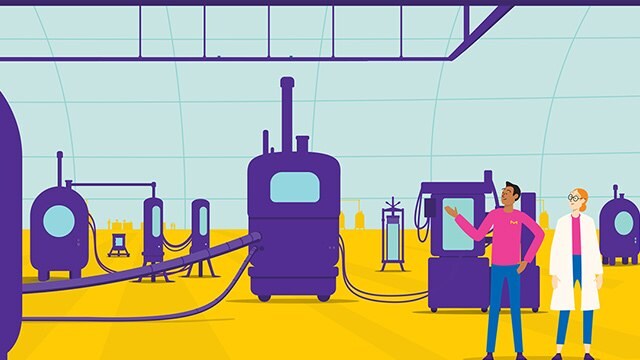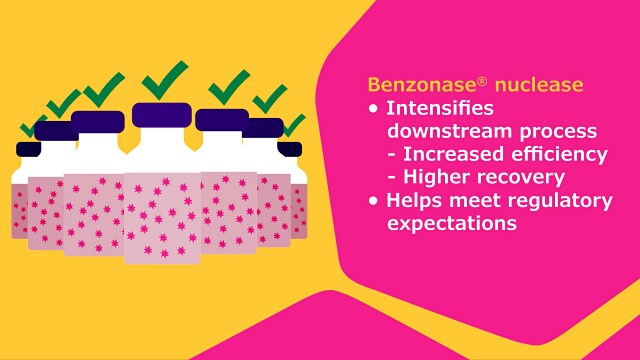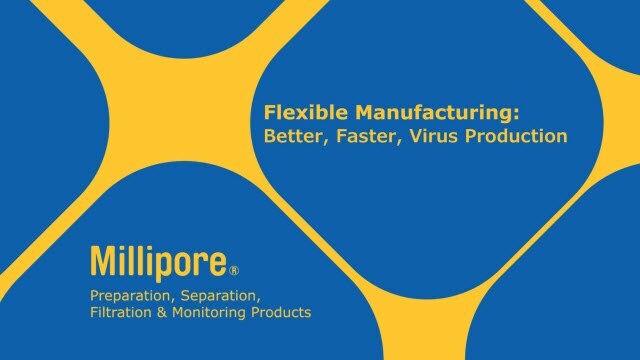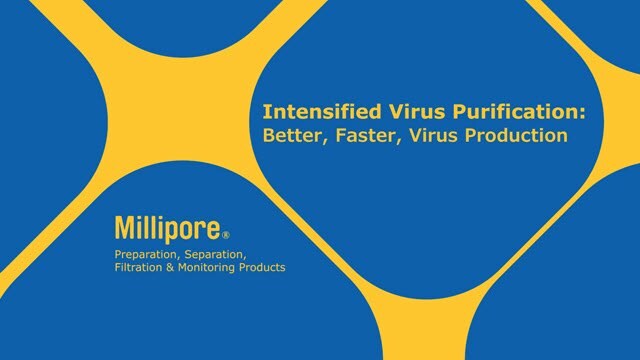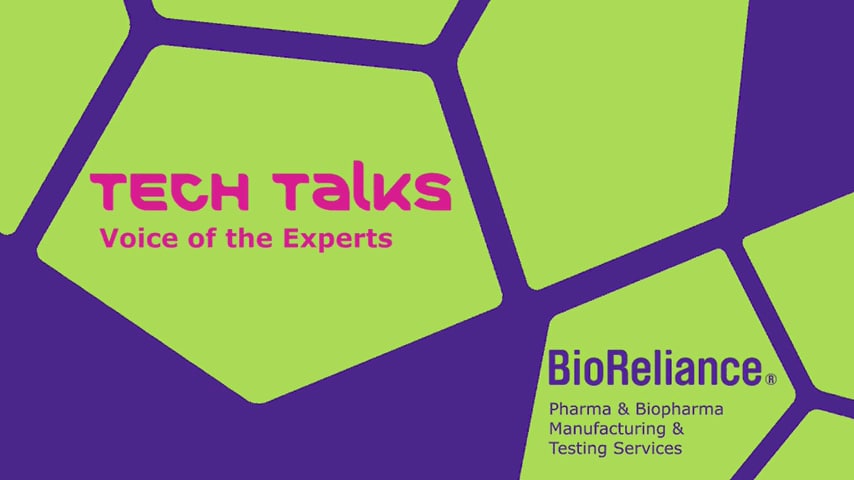mRNA Vaccine Process Manufacturing
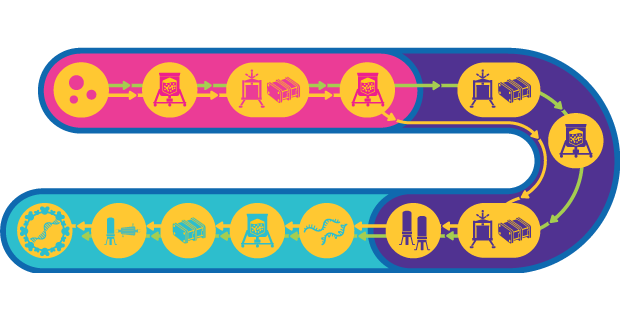
Process Train for mRNA Vaccines
Delivery of an mRNA into the cytosol of a cell can induce production of a target protein to trigger an immune response for vaccination purposes. The power and promise of mRNA technology were demonstrated by the development of COVID-19 vaccines with unprecedented speed and efficacy.
Development and manufacturing of mRNA vaccines is comparatively simple, scalable and extremely rapid. mRNA is produced by in vitro synthesis through an enzymatic process and there is no need to remove cells or host cell proteins. This simplified manufacturing process allows GMP facilities to switch to a new protein target within a very short period of time, with minimal adaptation to process and formulation.
Related Resources
Workflow: mRNA Manufacturing and Formulation. Products. Services. Expertise
Webinar: Make It Right: Best Practices for mRNA Manufacturing
Webinar: Unlocking the Potential of mRNA Vaccines and Therapeutics: A Manufacturing Perspective
Webinar: Formulation Development of Lipid-Based RNA Delivery and Vaccines
Webinar: Racing to Develop COVID-19 Vaccines and Therapies that Meet Regulatory Expectations
Webinar: Single-Use technology for mRNA Manufacturing
Technical Article: Manufacturing Strategies for mRNA Vaccines and Therapeutics
White Paper: Designing a Plasmid DNA Downstream Purification Process, for mRNA
News Release: Merck Acquires AmpTec to Expand mRNA Capabilities for Vaccines, Treatments, and Diagnostics
Whitepaper: Strategies for Successful Formulation Development of Lipid-Based RNA Delivery and Vaccines
Webinar: Effective and Efficient Design of a Downstream Purification Process for Plasmid DNA
Optimise Production of Plasmid DNA
Given the central role of the DNA Template in mRNA vaccine production, its design and purity are important factors for optimizing the mRNA product. Different technologies can be used. The traditional method is based on a plasmid DNA that is amplified within bacterial cells, and subsequent purification steps must be designed to yield a pure, concentrated, circular pDNA, which is then linearized. Our differentiated polymerase chain reaction (PCR)-based technology for DNA Template generation, has shown to have advantages over other technologies for mRNA manufacturing.
Maximize Recovery of the mRNA
The purity of the mRNA is a crucial determinant of yields and efficiency. Impurities removal reduces innate immune responses and result in significantly higher levels of reporter protein expression. Following in vitro transcription, products and process impurities must be removed including eventual endotoxins, immunogenic double stranded RNA (dsRNA), residual DNA template, RNA polymerase, RNA-DNA hybrids, secondary RNA structures (hairpin contaminants), elemental impurities. Such impurities can induce strong inflammatory reactions and side effects and need to be closely controlled prior product releasing.
Ensure Efficient Purity of the mRNA
Several options are available for mRNA purification including tangential flow filtration (TFF), reverse-phase ion-pair, anion exchange (AEX), hydrophobic interaction chromatography (HIC), and affinity chromatography using poly(dT) capture. Following the chromatography steps, a final concentration and diafiltration is performed to maximize purity and to transfer the mRNA into the appropriate buffer for formulation or storage.
Optimize Delivery of the Vaccine
The purified mRNA must be formulated into the delivery particle. Lipid nanoparticles (LNP) are commonly used for this purpose and to protect the mRNA from degradation. Lipids must be chosen based on the desired delivery route to achieve maximum efficacy and optimal biodistribution. Additional aspects to be considered when selecting the lipid include the type, source and quality.
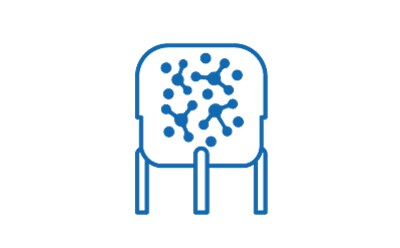
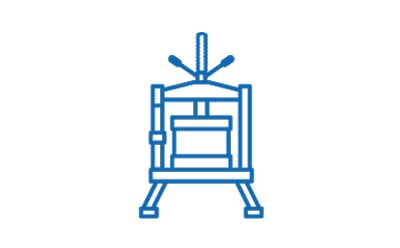
Purify
Achieve yield, efficiency and mRNA recovery goals while ensuring robust impurity removal.
- Buffers & pH Adjusters
- In vitro Transcription and Enzymatic Capping with Emprove® Chemicals Portfolio
- In vitro Transcription and Enzymatic Reactions with Mobius® Single-use Mixers
- Tangential Flow Filtration (UF/DF) with Pellicon® 2 Cassettes
- Tangential Flow Filtration (UF/DF) with Pellicon® Capsules® with Ultracel® Membranes
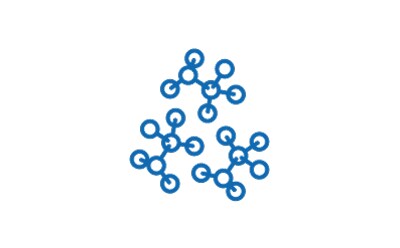
Formulate
Select an optimized formulation for efficient delivery of the vaccine.
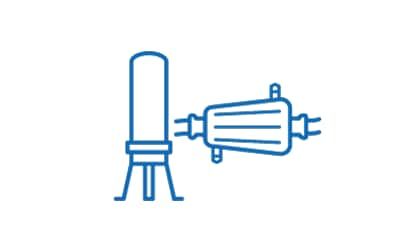
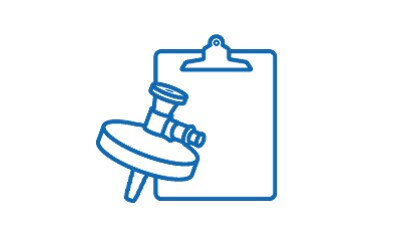
To continue reading please sign in or create an account.
Don't Have An Account?